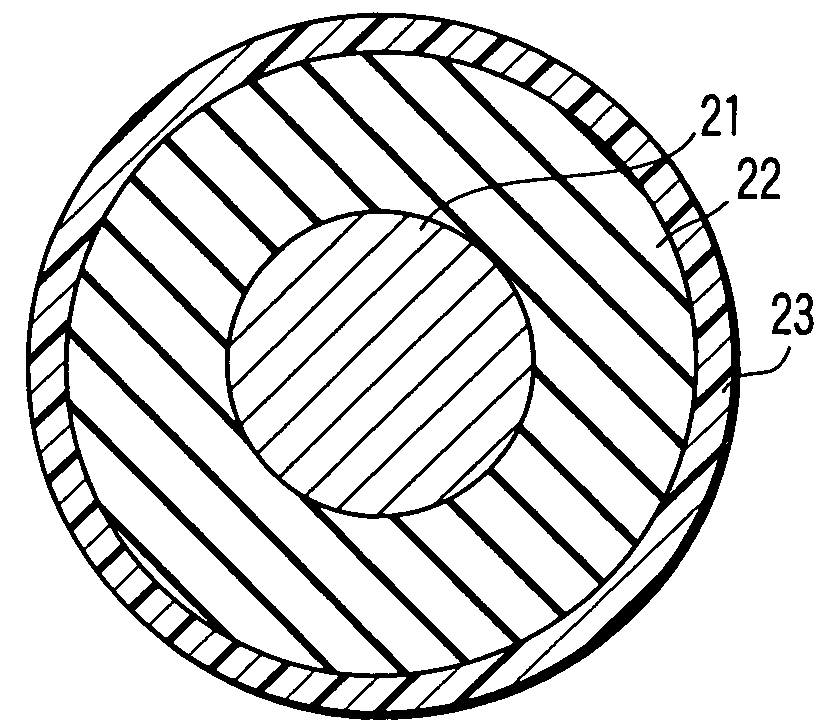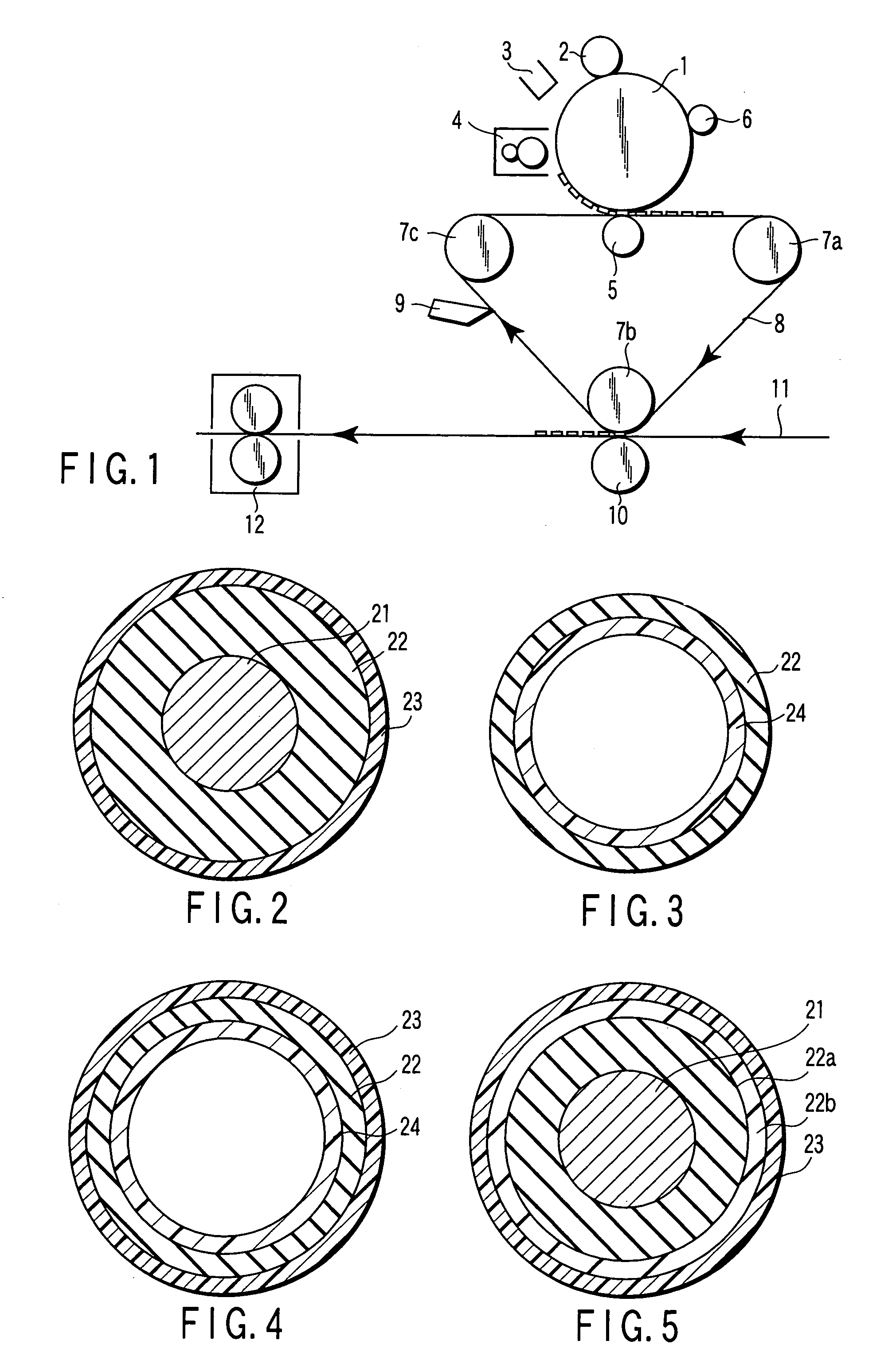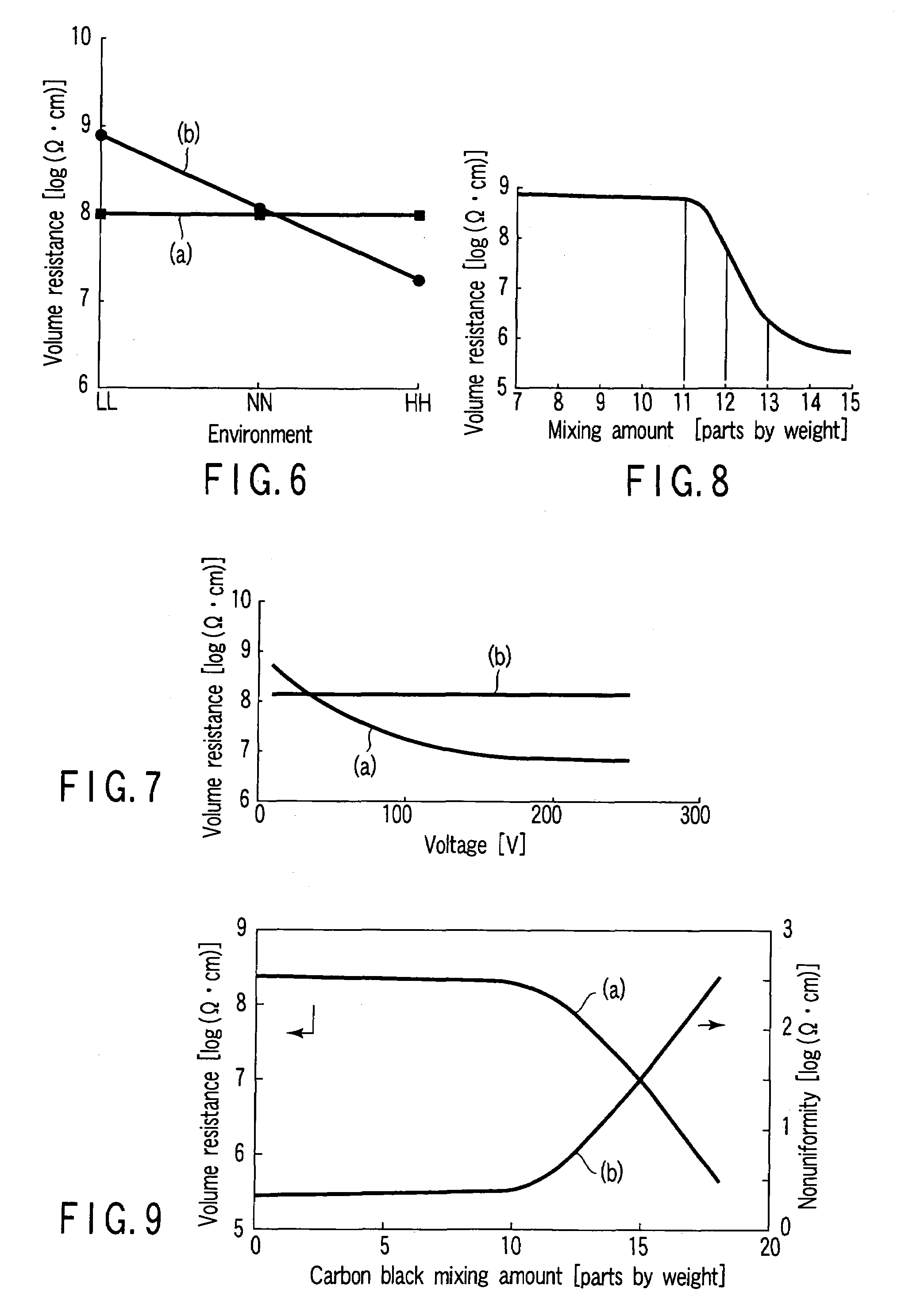Electrically conductive member
a technology of electrical conductors and components, applied in the direction of non-metal conductors, instruments, corona discharges, etc., can solve the problems of image defects, inability to obtain an appropriate current, image defects, etc., and achieve the effect of moderating defects
- Summary
- Abstract
- Description
- Claims
- Application Information
AI Technical Summary
Benefits of technology
Problems solved by technology
Method used
Image
Examples
example 1
[0093]A charging roll having an outer diameter of 15 φ and a rubber length of 320 mm was prepared by the ordinary rubber roll making method. The composition No. 8 shown in Table 2 was used for preparing the charging rubber roll. Used as the raw material rubbers were Gechron 1100 and Gechron 3100 (trade names of rubber raw materials having an ionic conductivity and manufactured by Zeon corporation). Also, used as the electronic conductive agent was Seast 3 (trade name of HAF carbon black manufactured by Tokai Carbon Co., Ltd). General additives for rubber as shown in Table 2 were used as the other additives.
[0094]The charging roll was made by the process steps 1) to 7) given below:
[0095]1) In the first step, the composition No. 8 was mixed, followed by performing the mixed compound in the shape of a ribbon.
[0096]2) The rubber compound preformed in step 1) was extruded by using an extruder manufactured by Mitsuba Mfg. co., Ltd onto a mandrel of 6φ so as to form a rubber layer having a...
example 2
[0112]A charging roll was prepared as in Example 1 by using the composition No. 9 shown in Table 2, except that the mixing amount of the electrically conductive composite rubber powder was varied. The charging roll for Example 2 was found to exhibit a hardness of 64°, a volume resistance under the NN environment of 8.11 log(Ω·cm), a dependency of the resistance on the environment, i.e., the difference between the value under the LL environment and the value under the HH environment, of 0.43 log(Ω·cm), and a dependency of the resistance on voltage, i.e., the difference between the value under the voltage of 10V and the value under the voltage of 250V, of 0.38 log(Ω·cm). Also, the difference between the maximum value and the minimum value of the resistance within the roll was found to be 0.38 log(Ω·cm).
[0113]In the next step, a printing test was conducted as in Example 1 by applying a voltage of 1,000V with the charging roll thus prepared used as the charging roll 2 included in the el...
example 3
[0114]A charging roll was prepared by using a resin powder having an electronic conductivity, instead of the composite conductive rubber powder used in composition No. 9 shown in Table 2. The electrically conductive resin powder was prepared by the steps given below:
[0115]1) Mixing was performed in a Shinagawa mixer with the composition B shown in Table 3, i.e., vinyl chloride (trade name of Zest P-21 manufactured by Zeon corporation), magnesium stearate, Seast 3 and the half amount of DOP.
[0116]2) In the next step, the remaining half amount of DOP was added bit by bit to the mixture that was sufficiently mixed in step 1) so as to prepare a paste.
[0117]3) Then, the paste was poured into a mold having a core metal arranged therein, followed by thermally curing the paste at 160° C. for 180 minutes.
[0118]4) Further, after the cooling, the molded material was released from the mold so as to obtain an electrically conductive resin roll.
[0119]5) Still further, the resin roll was ground so...
PUM
| Property | Measurement | Unit |
|---|---|---|
| size | aaaaa | aaaaa |
| volume resistivity | aaaaa | aaaaa |
| particle diameter | aaaaa | aaaaa |
Abstract
Description
Claims
Application Information
 Login to View More
Login to View More - R&D
- Intellectual Property
- Life Sciences
- Materials
- Tech Scout
- Unparalleled Data Quality
- Higher Quality Content
- 60% Fewer Hallucinations
Browse by: Latest US Patents, China's latest patents, Technical Efficacy Thesaurus, Application Domain, Technology Topic, Popular Technical Reports.
© 2025 PatSnap. All rights reserved.Legal|Privacy policy|Modern Slavery Act Transparency Statement|Sitemap|About US| Contact US: help@patsnap.com



